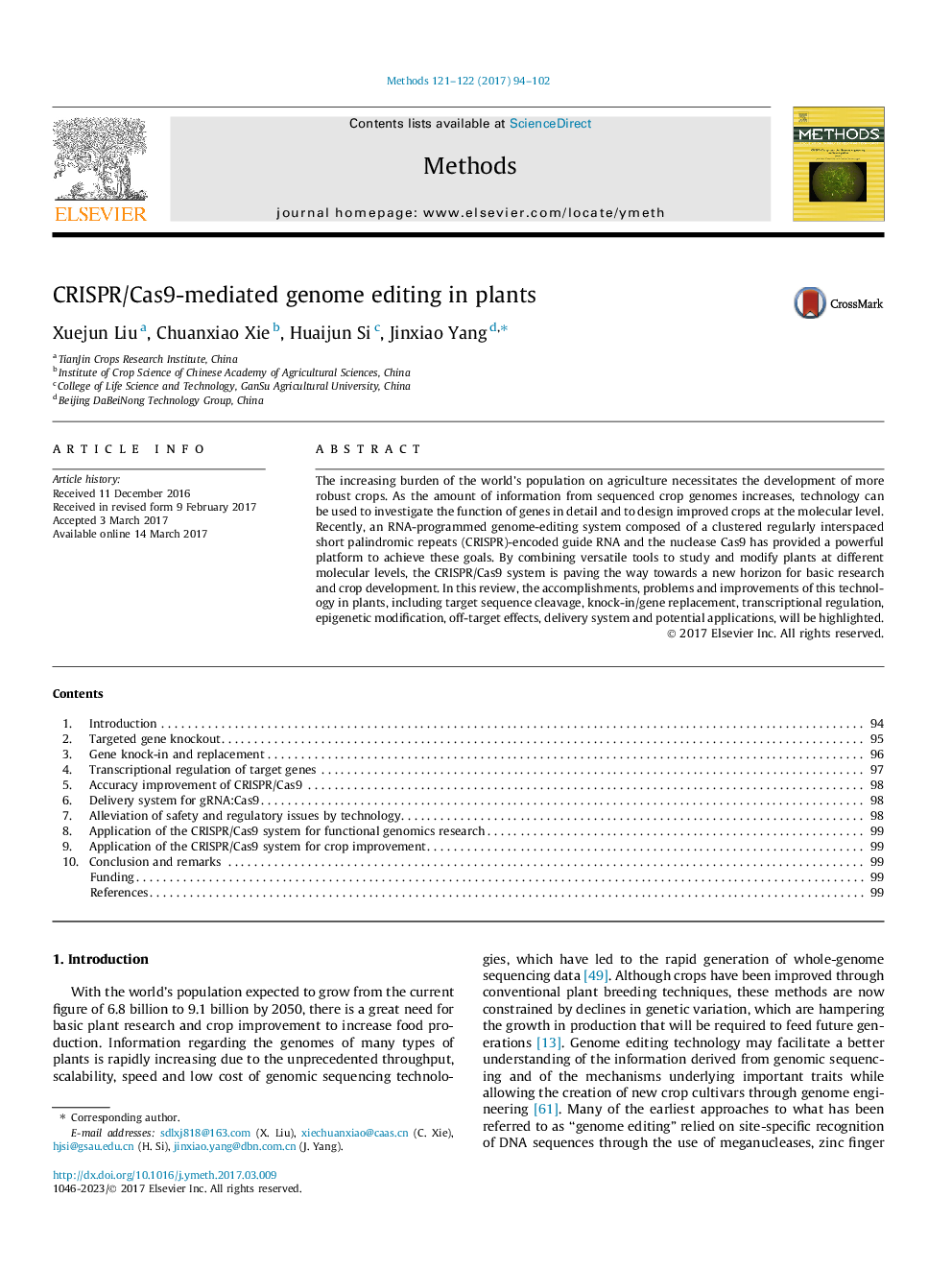| Article ID | Journal | Published Year | Pages | File Type |
|---|---|---|---|---|
| 5513602 | Methods | 2017 | 9 Pages |
Abstract
The increasing burden of the world's population on agriculture necessitates the development of more robust crops. As the amount of information from sequenced crop genomes increases, technology can be used to investigate the function of genes in detail and to design improved crops at the molecular level. Recently, an RNA-programmed genome-editing system composed of a clustered regularly interspaced short palindromic repeats (CRISPR)-encoded guide RNA and the nuclease Cas9 has provided a powerful platform to achieve these goals. By combining versatile tools to study and modify plants at different molecular levels, the CRISPR/Cas9 system is paving the way towards a new horizon for basic research and crop development. In this review, the accomplishments, problems and improvements of this technology in plants, including target sequence cleavage, knock-in/gene replacement, transcriptional regulation, epigenetic modification, off-target effects, delivery system and potential applications, will be highlighted.
Related Topics
Life Sciences
Biochemistry, Genetics and Molecular Biology
Biochemistry
Authors
Xuejun Liu, Chuanxiao Xie, Huaijun Si, Jinxiao Yang,
